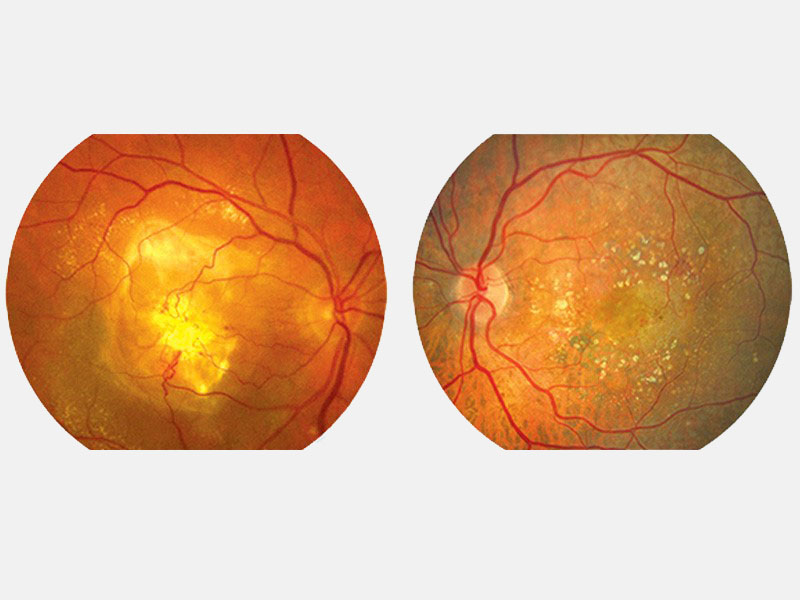Macular Degeneration
What is it?
AMD, or macular degeneration, is the most common cause of severe vision decrease in the western world, and affects people over 50 years of age. The disease causes lesions in the central portion of the retina called the macula. It is responsible for central vision needed for reading, driving or watching TV.
Macular degeneration can be:
-Dry or atrophic: It constitutes 85% of all cases. It presents a slow evolution over time (years).
-Humid Or exudative: is characterized by new formation of blood vessels that grow under the macula. These vessels are called neovascular membranes. Their evolution is quick (days / weeks) and severely compromises central vision.
Symptoms
No pain is presented, but it can present a series of visual symptoms that the patient must recognize: straight lines may appear wavy or broken, estimating distances and heights can be altered, sensitivity to light can be increased, as well as the need for an increased amount of light for reading. There may be blurred vision in the central part of the vision; also, when the disease is in an advanced stage, there can be a black spot in central vision, making it darker and larger the greater time of evolution has .
The diagnosis comprises:
- Examination of visual acuity
- Ophthalmological examination, paying special attention to the condition of the macula
- Fluorescein angiography. It involves the intravenous injection of a contrast for further study of their behavior at a choroid and retinal (fundus) level.
- Optical coherence tomography. It is a scanner of the macula, which is designed to detect the presence or absence of a neovascular membrane.
Treatment
Major advances in the field of macular degeneration mainly focus on the wet or exudative form. Until a few years ago there were only laser treatments. More recently, intravitreal injections with anti-angiogenic factors appeared as new treatments. Their action blocks the progression of neovascularization. The introduction of Ranibizumab (Lucentis) and bevacizumab (Avastin) has allowed to achieve better visual results. The average amount of intravitreal injections per year is between 5 and 6. This is an outpatient basis treatment requiring no income. Currently, 70% of treated patients a year manage to not lose sight, and 40% get away with visions above 0.5, which implies the possibility of driving. We now have another drug, intravitreal Aflibercept (Eylea®), about which clinical studies suggest that with fewer injections, the same efficiency is achieved as with Ranibizumab and Bevacizumab.
Prevention
The visual prognosis of untreated wet AMD is bad. Hence, early diagnosis is key to start treatment as early as possible. In patients who have already suffered a wet AMD in one eye can have a 50% chance of having a neovascular membrane in the other eye, depending on predisposing lesions that exist in the contralateral eye. Therefore it is important to periodically check these patients.

